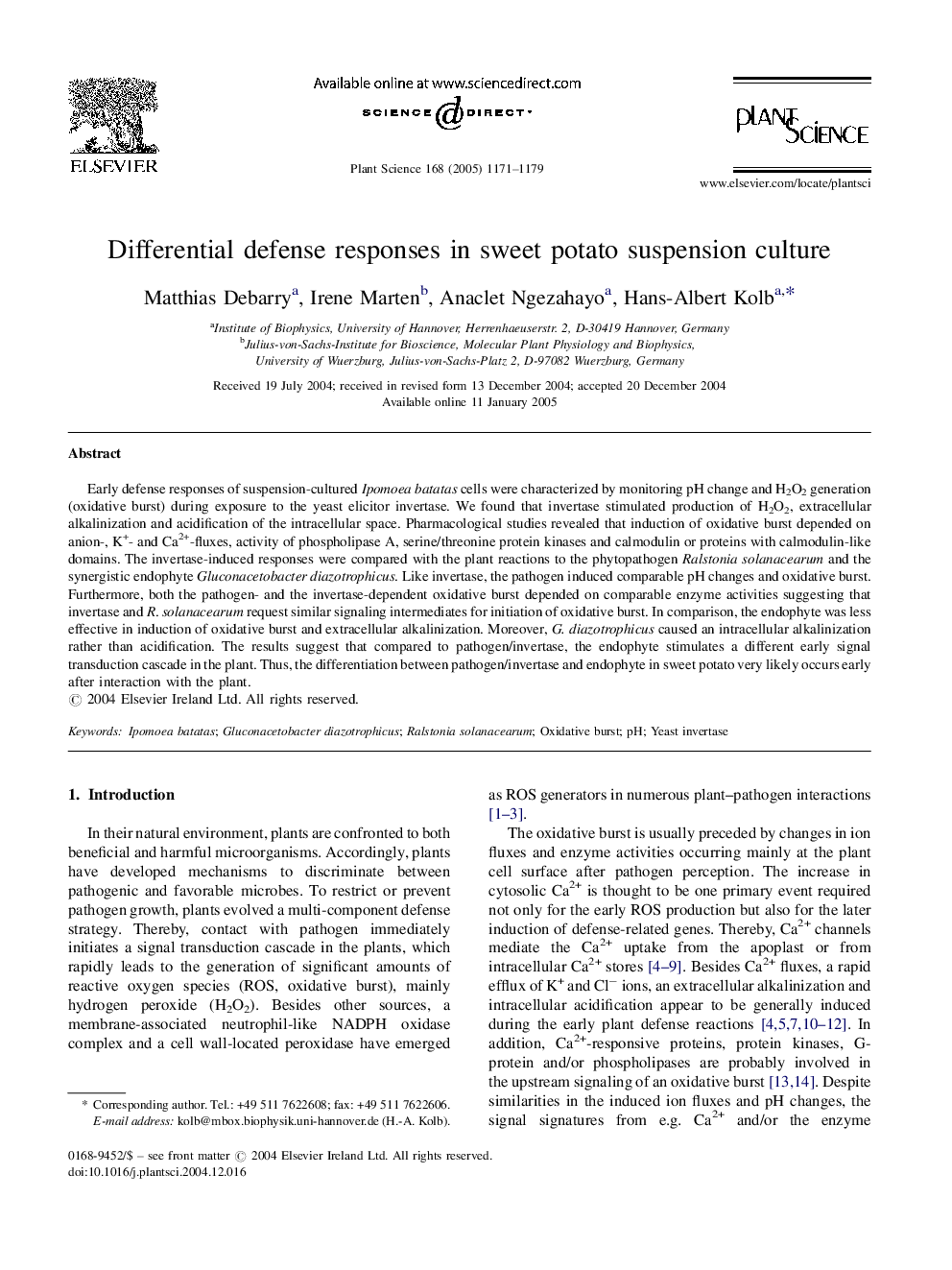| Article ID | Journal | Published Year | Pages | File Type |
|---|---|---|---|---|
| 10840871 | Plant Science | 2005 | 9 Pages |
Abstract
Early defense responses of suspension-cultured Ipomoea batatas cells were characterized by monitoring pH change and H2O2 generation (oxidative burst) during exposure to the yeast elicitor invertase. We found that invertase stimulated production of H2O2, extracellular alkalinization and acidification of the intracellular space. Pharmacological studies revealed that induction of oxidative burst depended on anion-, K+- and Ca2+-fluxes, activity of phospholipase A, serine/threonine protein kinases and calmodulin or proteins with calmodulin-like domains. The invertase-induced responses were compared with the plant reactions to the phytopathogen Ralstonia solanacearum and the synergistic endophyte Gluconacetobacter diazotrophicus. Like invertase, the pathogen induced comparable pH changes and oxidative burst. Furthermore, both the pathogen- and the invertase-dependent oxidative burst depended on comparable enzyme activities suggesting that invertase and R. solanacearum request similar signaling intermediates for initiation of oxidative burst. In comparison, the endophyte was less effective in induction of oxidative burst and extracellular alkalinization. Moreover, G. diazotrophicus caused an intracellular alkalinization rather than acidification. The results suggest that compared to pathogen/invertase, the endophyte stimulates a different early signal transduction cascade in the plant. Thus, the differentiation between pathogen/invertase and endophyte in sweet potato very likely occurs early after interaction with the plant.
Keywords
Related Topics
Life Sciences
Agricultural and Biological Sciences
Plant Science
Authors
Matthias Debarry, Irene Marten, Anaclet Ngezahayo, Hans-Albert Kolb,
